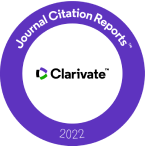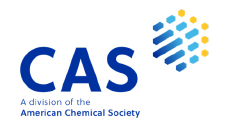Journal Volumes
Visitors
ALL : 904,247
TODAY : 1,688
ONLINE : 117
ALL : 904,247
TODAY : 1,688
ONLINE : 117
JOURNAL DETAIL
Distribution of Microcystis aeruginosa Kütz., Microcystin Concentrations and Water Quality of Mae Kuang Udomtara Reservoir, Chiang Mai Province
Paper Type |
Contributed Paper |
Title |
Distribution of Microcystis aeruginosa Kütz., Microcystin Concentrations and Water Quality of Mae Kuang Udomtara Reservoir, Chiang Mai Province |
Author |
Tossapon Vijaranakorn, Pamornwan Nutniyom and Somporn Chantara* |
Email |
scchi020@chiangmai.ac.th |
|
Abstract: The study on water quality and distribution of Microcystis aeruginosa Kütz. in Mae Kuang Udomtara Reservoir, Chiang Mai Province was conducted for 6 months starting from May to November 2002. Eight sampling sites were selected and water samples were collected monthly from each sampling site by water sampler. Some physico-chemical and biological parameters were measured. Eight groups of algae were found in water samples. The dominant family was Zygnemaphyceae with 37 species (47%) e.g. Cosmarium capilutum Roy & Biss. Four species of toxic algae were found i.e. Microcystis aeruginosa Kütz., Anabaena catenula (Kg.) Bornet. Flash, Cylindrospermopsis raciborskii (Wolosz.) Seenayya & Subba and Oscilaatoria sp. Dominant toxic species that has been found in this investigation was Microcystis aeruginosa Kütz. during its blooming period in July and August 2002. At the time, a lot of floating colonies of M. aeruginosa had been found at water surface. Maximum amount of Microcystis cells found at water surface site of the deepest point of the reservoir in July and August were 8,900 and 6,500 cells/ml, respectively. The highest cell density (8,900 cells.ml-1) was not exceeded the standard level for raw water used for water supply production. Cell density of Microcystis spp. was obviously decreased after the blooming period. The cell density of Microcystis spp. The cell density of Microcystis spp. was found to have positive significant relation (p < 0.01) to concentration of chlorophyll-a in water samples. Microcystins in water samples were determined starting from extraction by C18 SPE and analysis by HPLC-UV. The result revealed that microcystin-LR in water was detected only in July and August at the same time as blooming of Microcystis aeruginosa in the reservoir. The concentration of microcystin-LR found was in the range of 1.06 - 3.24 µg.l-1. However, microcystins were rapidly disappeared from waetr samples after blooming period due to their rapid biodegradation from UV expose. Based on the 7 parameters; NO3-N3NH4+-N3PO43-, PO43-P, DO, BOD, conductivity and chlorophyll-a water quality of Mae Kuang Udomtara Reservoir was classified into oligo-mesotrophic status according to trophic level, while classification by the standard of freshwater surface quality of Thailand, it belonged to category 2.
|
|
Start & End Page |
69 - 84 |
Received Date |
2003-08-04 |
Revised Date |
|
Accepted Date |
2003-10-13 |
Full Text |
Download |
Keyword |
cyanobacteria, Microcystis aeruginosa, microcystins, toxic blue-green algae, water quality |
Volume |
Vol.31 No.1 (JANUARY 2004) |
DOI |
|
SDGs |
|
| View:624 Download:167 | |
Copyrights © Since 2021 All Rights Reserved by Chiang Mai Journal of Science






